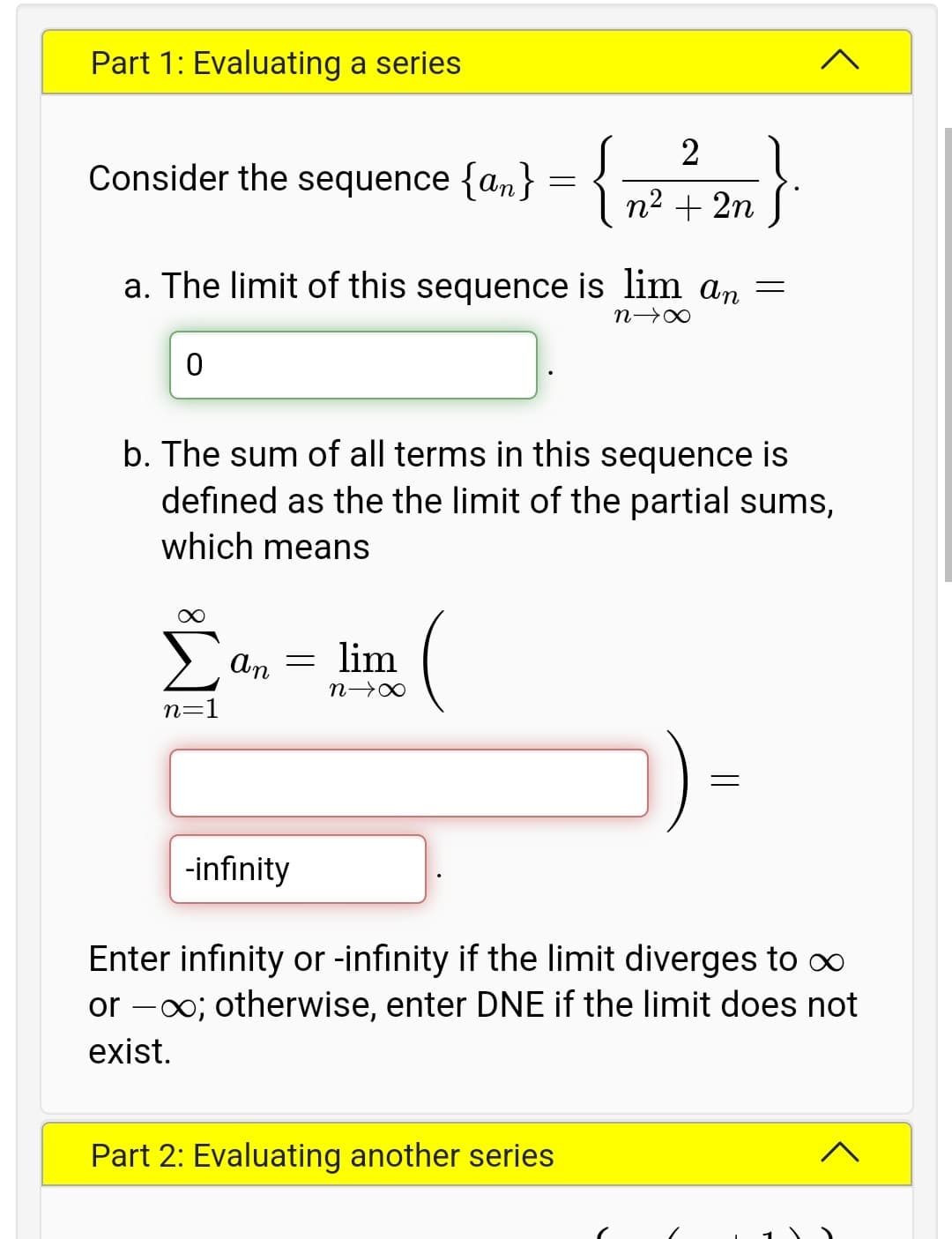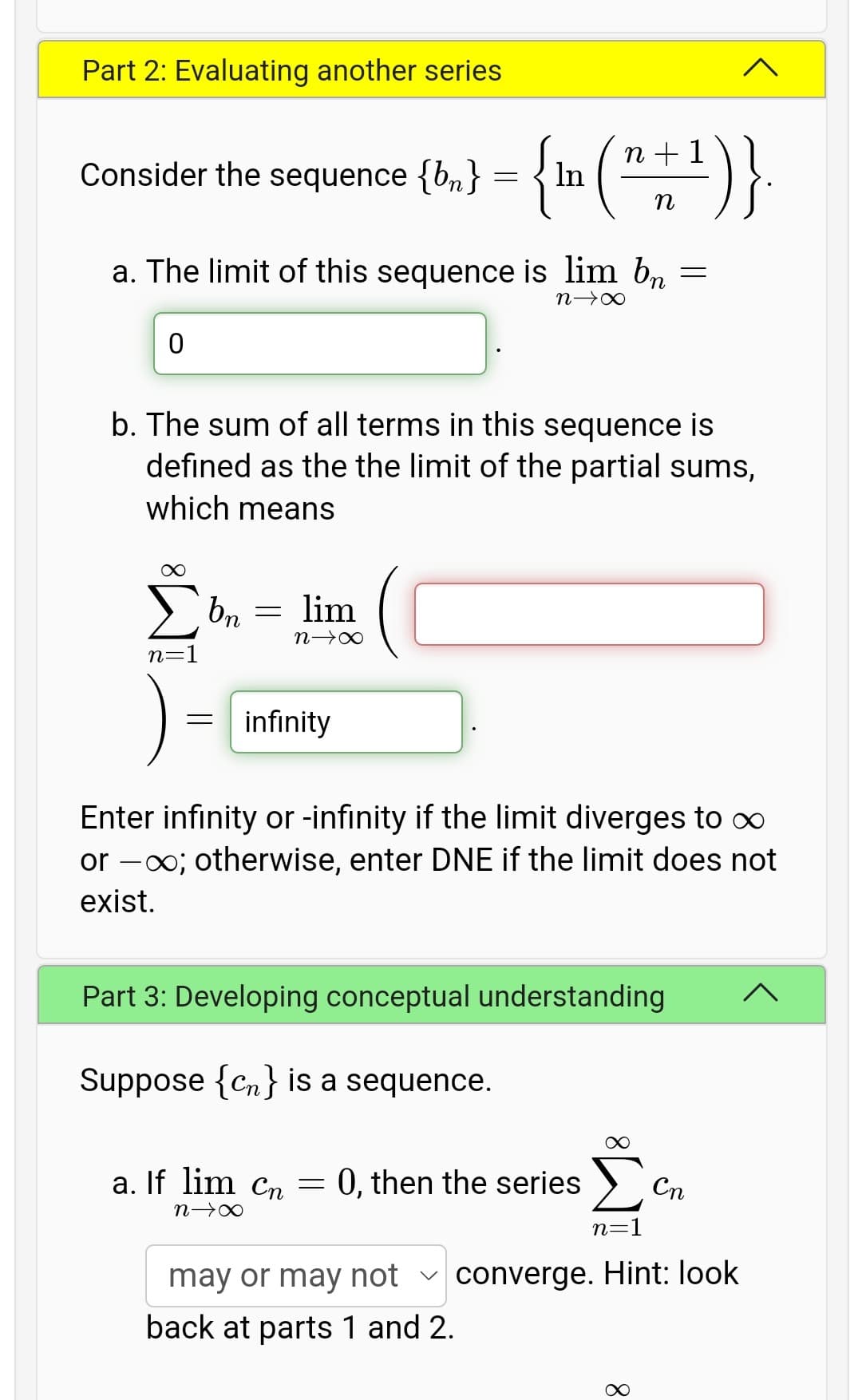Part 1: Evaluating a series ={} 2 Consider the sequence {an} I n² + 2n J a. The limit of this sequence is lim an = b. The sum of all terms in this sequence is defined as the the limit of the partial sums, which means An lim n 0 n=1 -infinity Enter infinity or -infinity if the limit diverges to ∞ or -00; otherwise, enter DNE if the limit does not exist. Part 2: Evaluating another series
Part 1: Evaluating a series ={} 2 Consider the sequence {an} I n² + 2n J a. The limit of this sequence is lim an = b. The sum of all terms in this sequence is defined as the the limit of the partial sums, which means An lim n 0 n=1 -infinity Enter infinity or -infinity if the limit diverges to ∞ or -00; otherwise, enter DNE if the limit does not exist. Part 2: Evaluating another series
Algebra & Trigonometry with Analytic Geometry
13th Edition
ISBN:9781133382119
Author:Swokowski
Publisher:Swokowski
Chapter10: Sequences, Series, And Probability
Section10.2: Arithmetic Sequences
Problem 68E
Related questions
Question

Transcribed Image Text:Part 1: Evaluating a series
- {}
2
Consider the sequence {an}
I n2 + 2n S
a. The limit of this sequence is lim an =
b. The sum of all terms in this sequence is
defined as the the limit of the partial sums,
which means
> an =
lim
n 0
n=1
-infinity
Enter infinity or -infinity if the limit diverges to o∞
or -00; otherwise, enter DNE if the limit does not
exist.
Part 2: Evaluating another series

Transcribed Image Text:Part 2: Evaluating another series
{m (")}
Consider the sequence {bn}
n + 1
In
a. The limit of this sequence is lim b, =
b. The sum of all terms in this sequence is
defined as the the limit of the partial sums,
which means
bn
lim
n=1
).
infinity
Enter infinity or -infinity if the limit diverges to ∞
or -00; otherwise, enter DNE if the limit does not
exist.
Part 3: Developing conceptual understanding
Suppose {Cn} is a sequence.
a. If lim Cn = 0, then the series >
Cn
n=1
may or may hot v converge. Hint: look
back at parts 1 and 2.
8.
Expert Solution
This question has been solved!
Explore an expertly crafted, step-by-step solution for a thorough understanding of key concepts.
This is a popular solution!
Trending now
This is a popular solution!
Step by step
Solved in 3 steps with 3 images

Recommended textbooks for you

Algebra & Trigonometry with Analytic Geometry
Algebra
ISBN:
9781133382119
Author:
Swokowski
Publisher:
Cengage


Algebra & Trigonometry with Analytic Geometry
Algebra
ISBN:
9781133382119
Author:
Swokowski
Publisher:
Cengage
